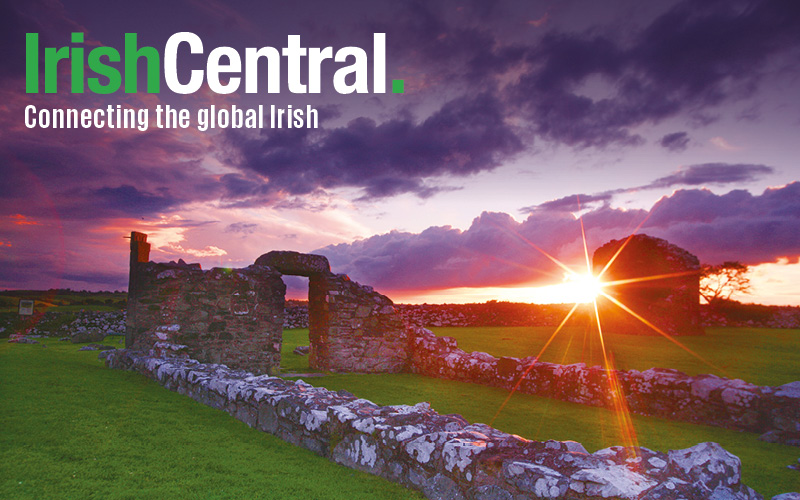Although the counting of votes is not yet completed, Fine Gael looks as if it will have just above 50 seats in the Dáil, the main house of the Irish parliament, compared to 67 when the general election was called on February 3rd. That's a major setback but it doesn't amount to wipe-out.
For the junior partners in government, however, the contest has been a disaster. Heading into the election with 33 Dáil deputies, or TDs as they are called, the party led by Joan Burton will be lucky to come back with seven, although she retained her own seat in the constituency of Dublin West. Deputy leader and Environment Minister Alan Kelly, whose brother Declan is a prominent figure in the Irish-American community, was re-elected in Tipperary.
Notable casualties at the ballot-box include former justice minister Alan Shatter, one of Ireland's most outspoken and controversial politicians, who was edged out in the three-seat constituency of Dublin Rathdown. Another high-profile figure who lost out on the same electoral battleground in south Dublin was the Minister for Communications, Alex White of the Labour Party.
Keep up to date with Irish politics news here
Minister for Children and former minister for health, Dr James Reilly of Fine Gael, lost out in the Dublin Fingal constituency to the north of the capital city. Labour veterans Joe Costello in Dublin Central and Emmet Stagg in Kildare North also went down to defeat.It's a political pick'n'mix. Too many to choose from, and you'll never be truly happy with what you choose. #GE16 pic.twitter.com/saL1Hk6Qnp
— Jonathan Healy (@jonathanhealy) February 29, 2016
Meanwhile the main opposition party, Fianna Fáil, is coming back with in or around twice the total of 21 seats it held when going into the election. Although the "Soldiers of Destiny" will have about ten TDs fewer than Fine Gael, they can still claim to have undergone a remarkable recovery.
Sinn Féin is also set to increase its Dáil membership from 14 TDs to a figure in the mid-twenties. The party led by Gerry Adams will be more than three times larger than Labour. There was criticism of the party leader's performance in media interviews during the campaign and this may have contributed to the defeat of Paul Donnelly, who was considered a sure thing in Dublin West.
Sinn Féin's finance spokesman Pearse Doherty was re-elected in Donegal but there was general surprise at the difficulties encountered in the same constituency by the party's spokesman on justice, Pádraig Mac Lochlainn, who is fighting for his political life against Independent TD Thomas Pringle, at time of writing.
Read more: Irish electorate takes revenge on hairshirt government’s austerity program
The new Dáil will be awash with Independents and members of smaller, fringe parties although the leader of the right-of-center Renua, former Fine Gael TD Lucinda Creighton, lost her seat in Dublin Bay South.
While the counting of votes was still going on, Enda Kenny accepted that the coalition partners would not have a majority in the new Dáil. But he added that he had a responsibility to do "everything possible" to establish a stable government.
But when asked if such an administration might include Fianna Fáil, he replied: "I'm not going to talk about any of the options that are open right now."
During the election, Kenny rejected the concept of an alliance with Micheál Martin's party and his latest comments are seen as an attempt to forestall a possible move against his leadership of Fine Gael.
Fianna Fáil also rejected any suggestion, in the course of the campaign, that it might enter coalition with Kenny's party. However, this has not halted intense speculation that they could still cut a deal between them to form the next government.
This would be an historic move, since the two parties trace their origins to the Civil War which broke out after the signing of the Anglo-Irish Treaty in 1921. That conflict left a legacy of hatred and suspicion which lasted for decades. Whatever the other implications, a political alliance now would close that bitter chapter in Irish history.
If there is no "marriage of convenience" between Fine Gael and Fianna Fáil, either or both of the parties could start looking at Sinn Féin as part of a plan to make up the numbers. At their last annual conference, the republicans passed a motion against participation as a minority partner in a government led by either Fianna Fáil or Fine Gael. Nevertheless, the prospect of holding office on both sides of the Irish border in the centenary year of the 1916 Rising would have its attractions for some members of Sinn Féin.
Counting for the general election may drag out for a number of days in some constituencies but the overall shape of the new Dáil is clear enough at this stage. The incumbent administration has been given its marching orders and the only way it can reverse that situation is to gain sufficient support from members of the opposition.
Some believe that Fianna Fáil will allow the coalition to remain in office for a few months before forcing another election. Others insist that Kenny and Martin will agree a common platform, perhaps including an equal share-out of ministerial positions and an agreement to rotate the office of taoiseach between the leaders of the two parties.
There are exciting but uncertain times ahead on the Irish scene. As W.B. Yeats wrote after 1916, all is changed, changed utterly, but nobody knows whether a terrible beauty will be born, or a political gargoyle.




Comments